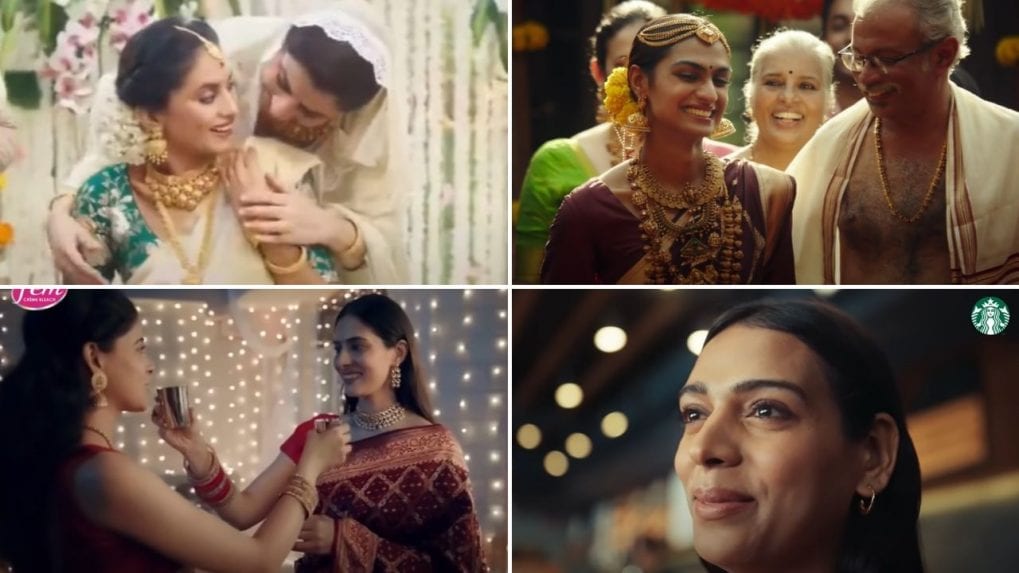#TBH: Can advertising take the lead in bringing social change?
Gone are the days when brand advertising just meant highlighting the features or attributes of a product. Today, brands are strongly aligning their communication strategies with a cause. With the proliferation and the growing popularity of social media, the medium has played its part in brands strongly associating with a cause.
ADVERTISEMENT
Brands across categories seem increasingly inclined to play a distinct role in society and define their higher purpose rather than just sell a product. Starbucks’ new ad film featuring a transgender girl meeting her parents for the first time as a woman at the café is a case in point. Though still few and far between, such advertising is not entirely new. In the past few years, brands and their agencies have got off the beaten track to create more inclusive and meaningful communication.
Two years ago, Kerala-based Bhima Jewellers broke the mold and portrayed the journey of a trans woman and the love showered by her family as they accepted her reality. Whenever brands build messaging around sensitive social issues, they receive both bouquets and brickbats.
The Tanishq ad depicting an inter-faith marriage and Dabur’s Fem film featuring a same-sex couple celebrating Karwa Chauth had to be rolled back given the vicious trolling. Tata Starbucks ad too faced public censure. But it was applauded too for a sensitive portrayal of the awkwardness around the LGBTQIA+ community and parents’ eventual acceptance of their transgender daughter.
Ad industry veterans and brand specialists say that the concept of brand has evolved from the time when it was just a business asset. It was a trademark that identified its ownership and established a means of protection against its use by others. Then as a marketing tool, it became a shorthand for distinct features and attributes of a company, product or service, representing functional and emotional benefits.
“With increasing parity, brands had to go beyond communicating direct benefits and creating a positive association in people’s minds through a process of anthropomorphism, according or imbuing them with a higher purpose, a clear personality and core values,” said Samit Sinha, managing partner, Alchemist Brand Consulting.
That probably explains why strong brands are articulating their point of view on issues concerning society. While some have promoted communal harmony in their communication, others have pressed for gender equality and diversity.
The proliferation of social media has played an important role in brands expressing solidarity with a cause. “The quest to make messages go viral has encouraged brands to push the envelope and experiment with controversial subjects and edgier communication themes,” Sinha said.
Sanjay Sarma, founder, SSARMA Consults, a boutique branding & communication advisory, agreed with Sinha. Digital media allows brands to quickly reach and engage with a younger and vocal generation that is more likely to be concerned about social issues, he said.
In the digital age, Indian consumers are more aware and opinionated, freely airing their views on social media. Brands take cognisance of this chatter, and, if it aligns with their core values or offers a moment marketing opportunity, they respond in their own unique way, Sarma said. “Some do it with a lot of conviction, others merely use it as an opportunity to ride the wave and gain some traction,” he added.
While sticking their necks out on issues may imperil the brands, they do take calculated risks to be able stand out in the clutter. To be sure, the representation of the LGBTQIA+ community in advertising is a more recent phenomenon. This may be a result of the successful challenge to Section 377 of the Indian Penal Code that effectively decriminalised consensual adult same-sex relationships, providing a huge fillip to the LGBTQIA+ movement.
Clearly, it is not just the members of the LGBTQIA+ communities that these brands are targeting, they are also talking to all the consumers sympathetic to the cause and nudging those who may not be favourably inclined or holding liberal views.
Sarma said progressive businesses are investing in diversity, equity and inclusion as an important framework within which they operate. “Young adults tend to lean towards brands that reflect a greater sense of empathy and sensitivity. They align with culture and communities that operate within a non-discriminatory, progressive, inclusive, safe space for all,” he added.
So, is brand advertising taking a lead in bringing about a social change? Brands are not doing as much as they can since their primary purpose is business for profit, said Sarma. Also, there are risks involved as their communication may backfire if they are not sensitive in their approach and nuanced in their craft.
Yet, art in any form -- visual arts, performing arts, literary or commercial art -- plays an important role in breaking stereotypes, showing a mirror to society, and bringing uncomfortable conversations mainstream. “Cinema and advertising are backed by higher budgets and reach a wider audience. Therefore, their impact can be much larger,” Sarma said.
Sinha believes since marketing and advertising (unless it’s around social messaging) is driven by commercial considerations, it is fundamentally opportunistic. “Good advertising needs to have its finger on the pulse of the leading-waves of social changes and a good sense of the prevailing mood of the public. That’s when advertising can and occasionally does help in accelerating social change,” he said.


